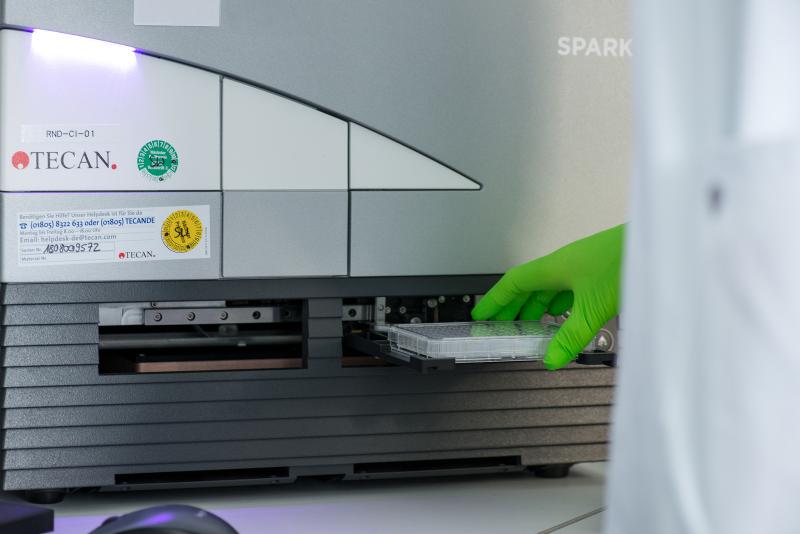Fluorescence spectroscopy
Fluorescence spectroscopy is a frequently used and versatile technique for the analysis of higher order structures of proteins.

Intrinsic fluorescence
Intrinsic fluorescence of proteins in solution is commonly measured in order to detect changes in protein conformation, e.g., due to different solution conditions (pH, excipients, etc.), elevated temperature and storage. Upon excitation at 280 nm, a protein’s fluorescence signal arises primarily from the presence of tryptophan and tyrosine residues. Selective excitation of tryptophan residues, e.g., at 295 nm, is also possible and commonly applied to proteins, because tryptophan fluorescence is particularly sensitive to subtle conformational changes. Tyrosine and tryptophan residues are typically buried in the core of a folded protein (not solvent exposed). Partial unfolding and aggregation lead to changes in the local environment of these residues (e.g., solvent exposure), leading to changes in fluorescence intensity and emission maximum, amongst others.
Extrinsic fluorescence
Extrinsic fluorescence can also be used to detect changes in protein structure and the formation of aggregates. Various fluorescent dyes are available, such as Nile Red, ANS and Bis-ANS, which can be used as hydrophobic probes. If a protein unfolds or aggregates, e.g., due to destabilizing solution conditions or increased temperature, the dye binds to hydrophobic patches on the protein (aggregates) and fluoresces with much greater intensity than free dye in solution.
Quality & biosafety level of this method
We provide all our analytical services with the highest quality standards. Each project is carried out by experienced scientists and every report or data presentation is comprehensively checked by a scientific reviewer. We offer this technology with the following quality and biosafety level:
Standardized methods or dedicated method development
For common sample types, we can often apply standardized methods with little setup effort. On top of this, our experienced analytical scientists perform in-depth method development or method optimization tailored to your drug substance, product type and development phase.
Method development
During method development, we tailor sample preparation, method settings, and data analysis to the needs of your project and sample.
For this purpose, we include a representative sample and, where available, suitable reference standards and stressed/degraded materials. This way, our analytical scientists can design a method that is highly suitable for your needs, stability indicating, as well as robust and repeatable. Upon request, we compile a detailed method description for your records.
This can be applied under R&D. Read more
Method qualification
A method qualification is the initial assessment of the performance of an analytical procedure to show that it is suitable for the intended purpose.
During method qualification, our analytical scientists perform a documented testing that demonstrates that the analytical procedure meets certain acceptance criteria in several categories. These may include repeatability, linearity, intermediate precision, robustness and more. We compile a qualification plan and a qualification report including all relevant data.
This can be applied under R&D. Read more
Contact us
Contact us
Do you have any questions? Want to analyze your samples?


